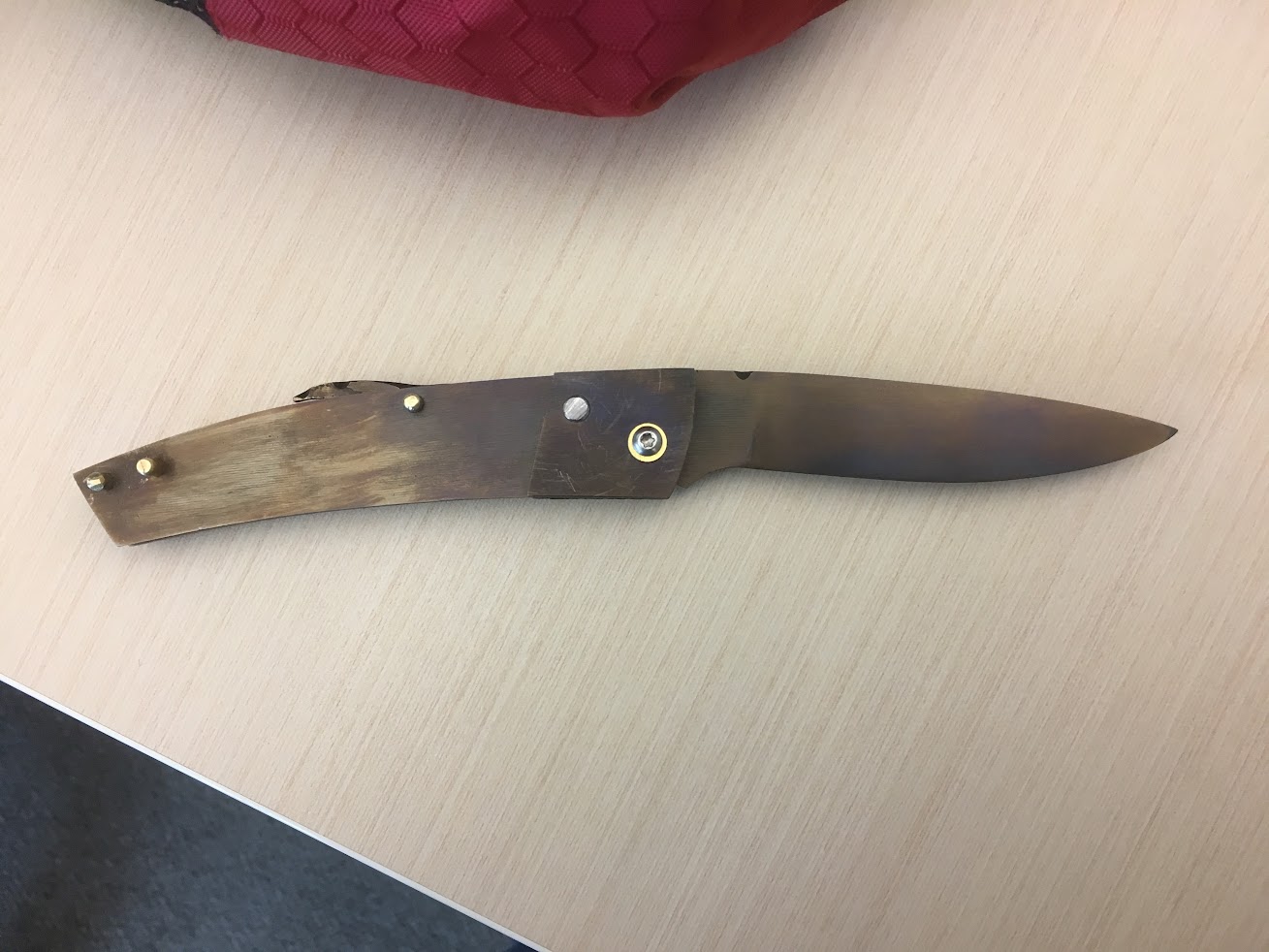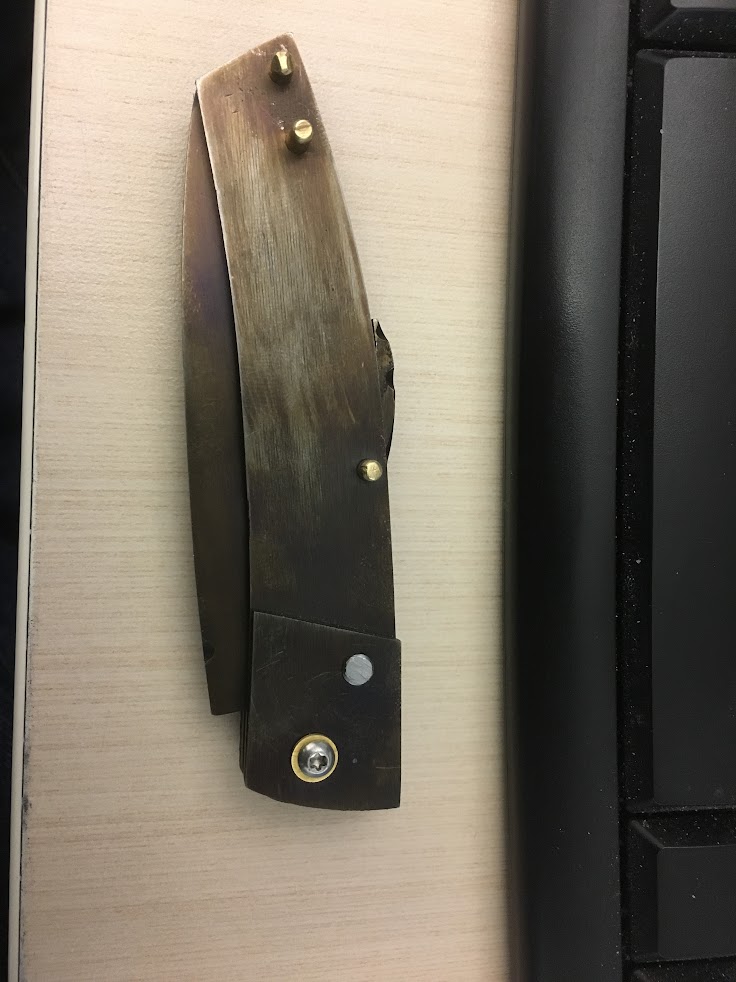- Joined
- Oct 3, 2016
- Messages
- 113
OK so I am well on my way for my third folder, like my first 2 this is a lockback folder. At this point I made all the metal parts and the heat treatment. I still need to do:
1) the wooden handle
2) the finish on all metal parts
Done with tempering (colors are still there), I reassembled the knife. Third picture is before heat treat but shows the filework
What I like so far:
The general shape is more pleasant than on the first one, different than on the second but I liked the second knife's shape.
The lockbar is flush with the liners in both open and close position. The mechanism works well (locks solidly and the knife snaps closes)
What I don't like:
the protruding part of the lockbar (the place you push to unlock)should be just a bit longer so that the bottom of it is hidden by the liners.
the spring is not flush with the liners
I welcome any criticism (hopefully constructive though) and will keep you updated with progress.
PS: as my previous knife this is made only with hand tools except for a drill press, no sander, grinder and so on, files, hacksaw and sand paper so be indulgent if updates are far between every thing is time consuming.
PPS: I'll post pictures of the insides in the coming days I forgot to take any and am not at home.



1) the wooden handle
2) the finish on all metal parts
Done with tempering (colors are still there), I reassembled the knife. Third picture is before heat treat but shows the filework
What I like so far:
The general shape is more pleasant than on the first one, different than on the second but I liked the second knife's shape.
The lockbar is flush with the liners in both open and close position. The mechanism works well (locks solidly and the knife snaps closes)
What I don't like:
the protruding part of the lockbar (the place you push to unlock)should be just a bit longer so that the bottom of it is hidden by the liners.
the spring is not flush with the liners
I welcome any criticism (hopefully constructive though) and will keep you updated with progress.
PS: as my previous knife this is made only with hand tools except for a drill press, no sander, grinder and so on, files, hacksaw and sand paper so be indulgent if updates are far between every thing is time consuming.
PPS: I'll post pictures of the insides in the coming days I forgot to take any and am not at home.


